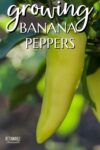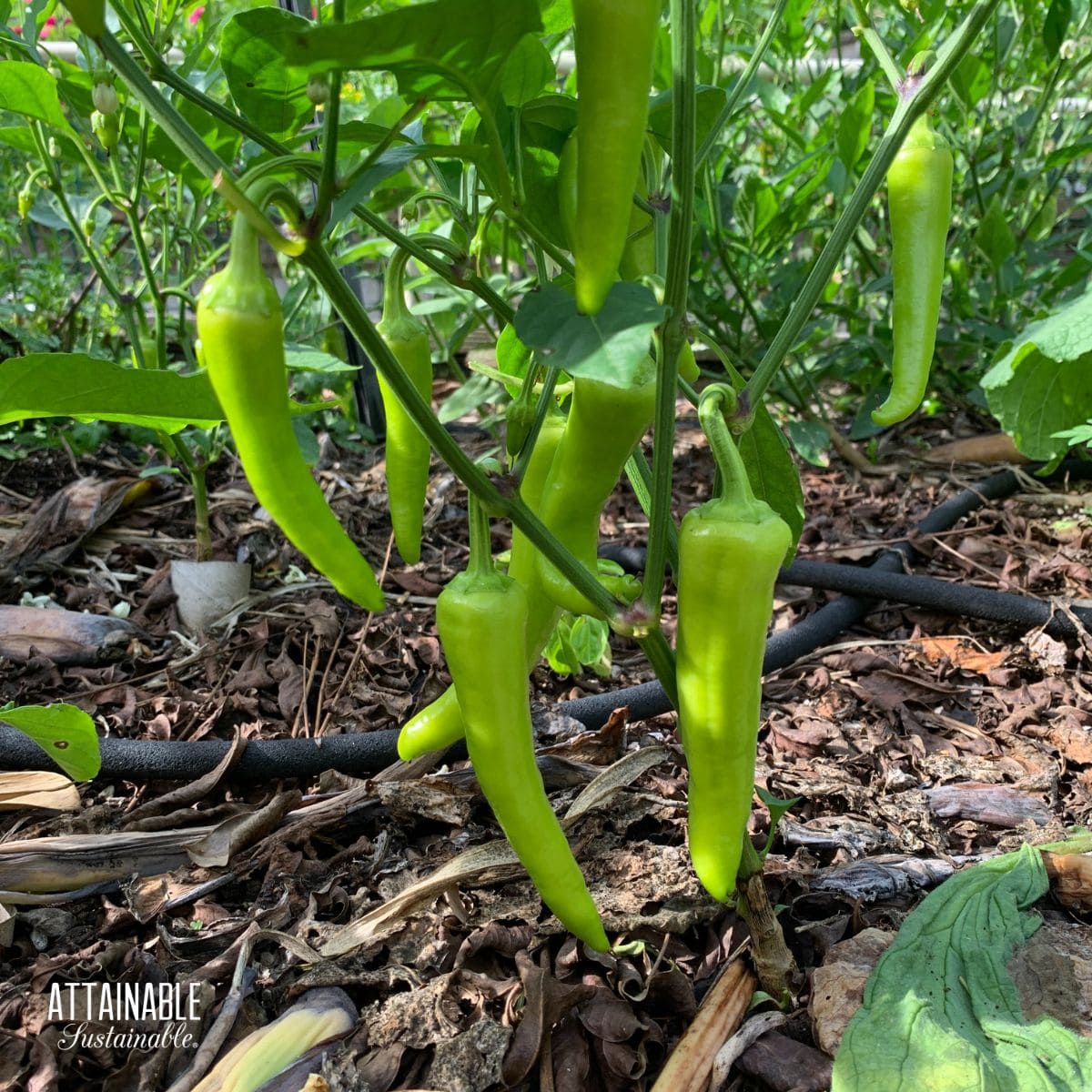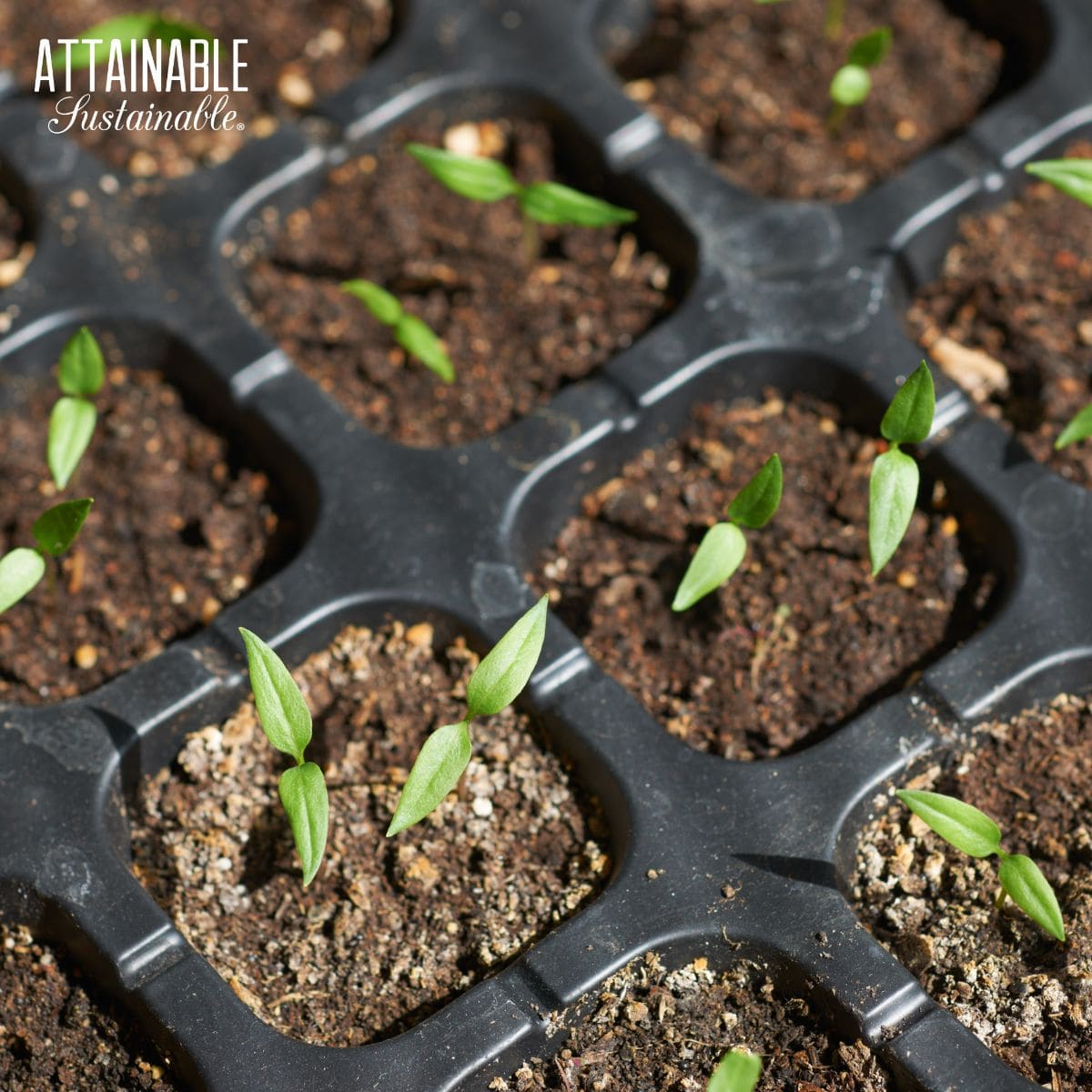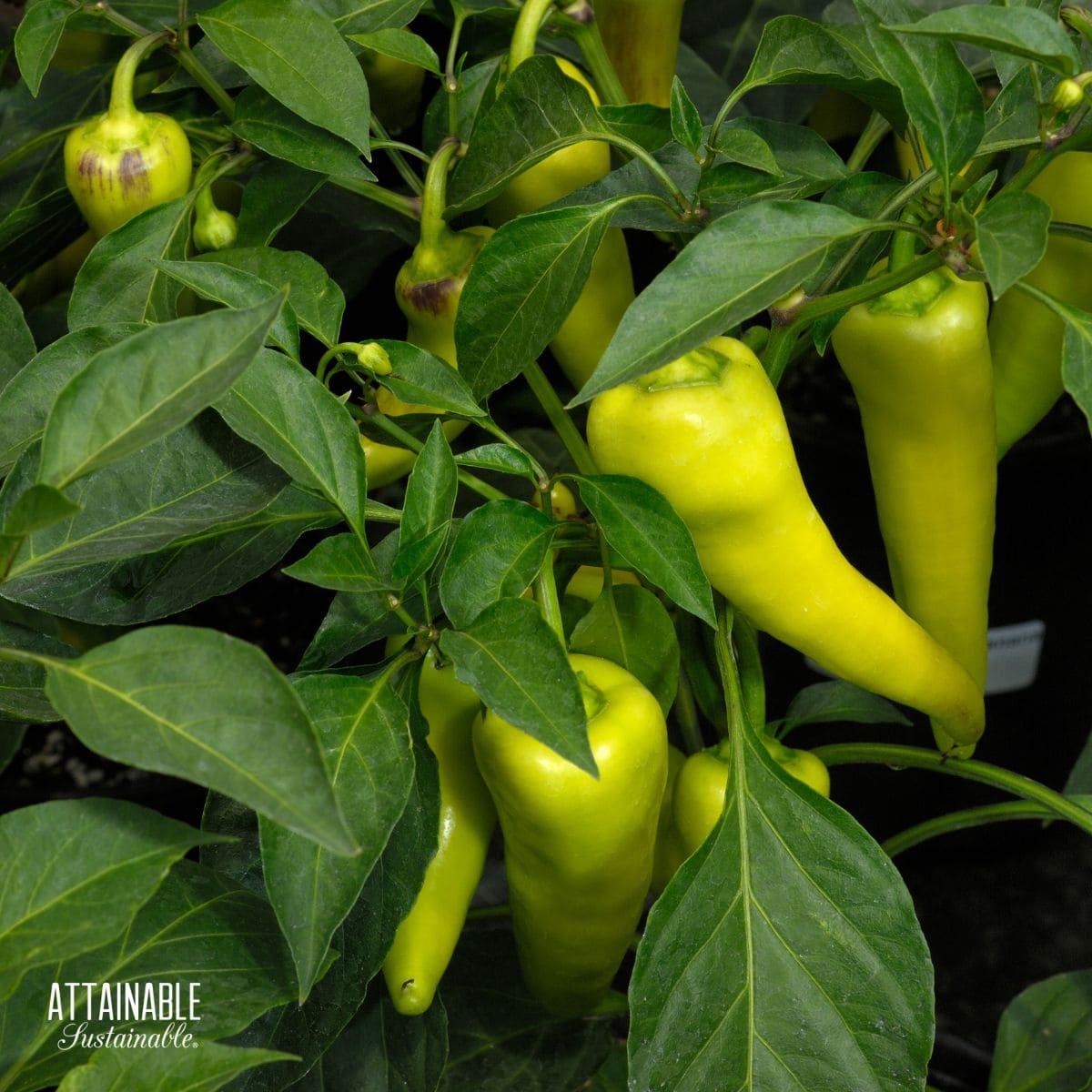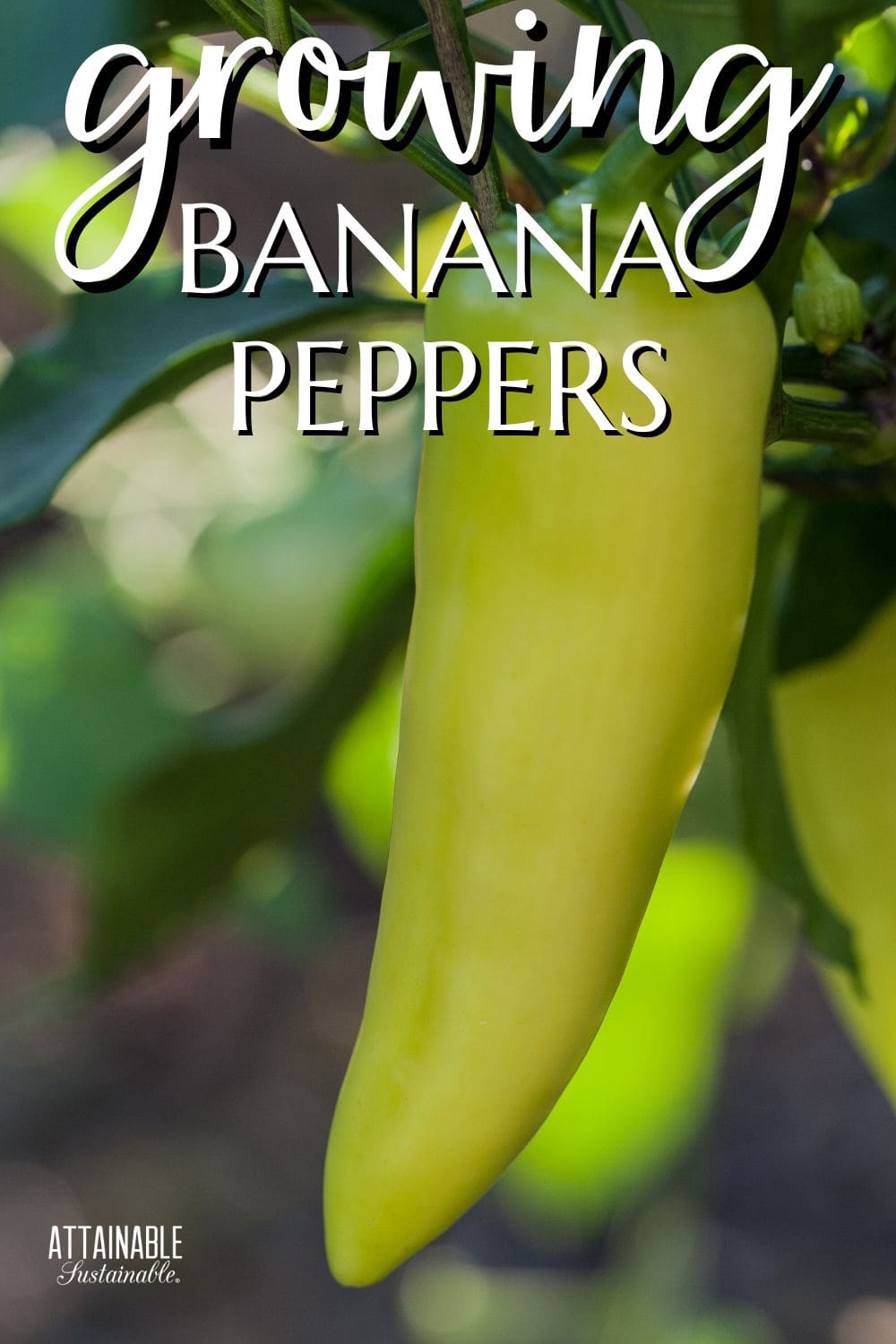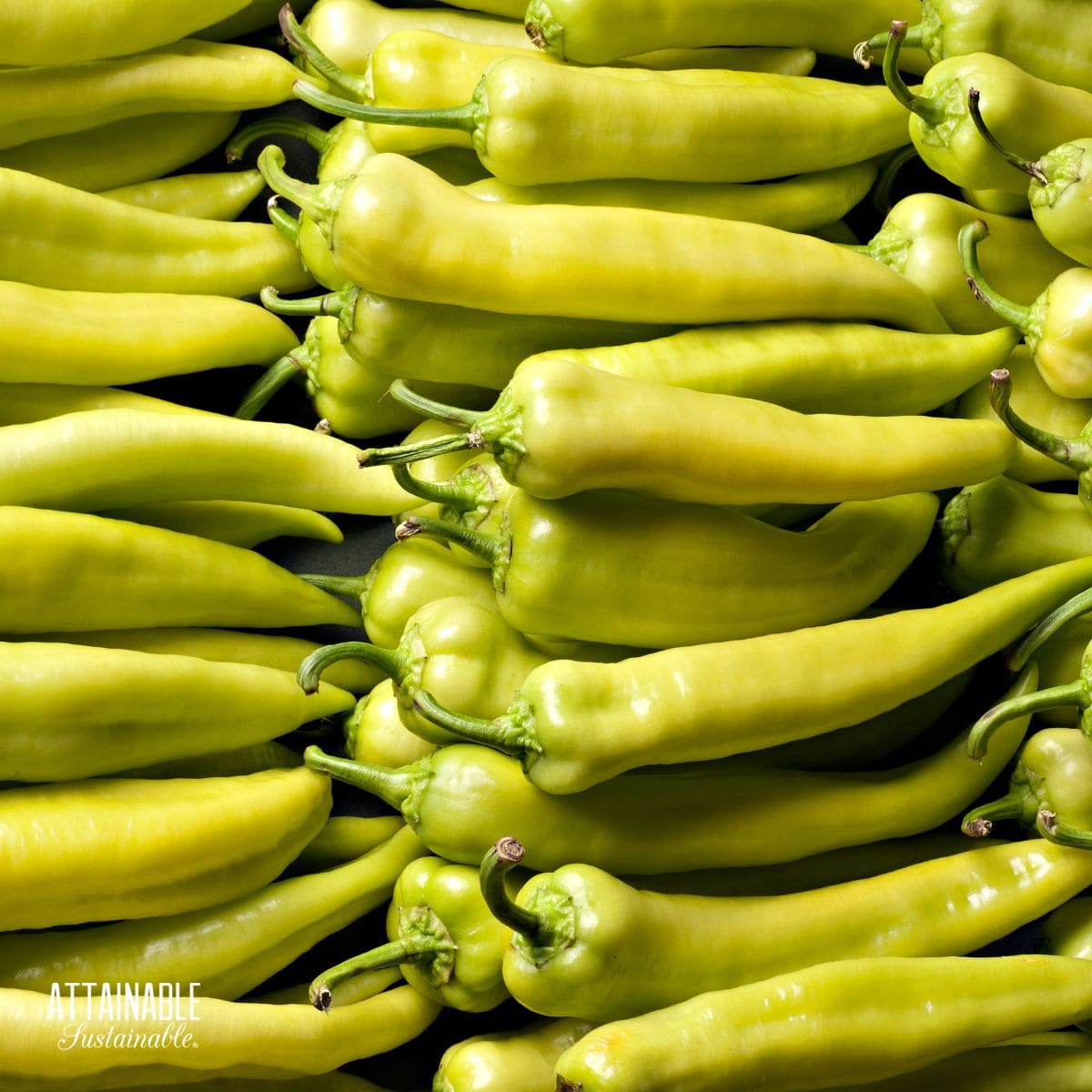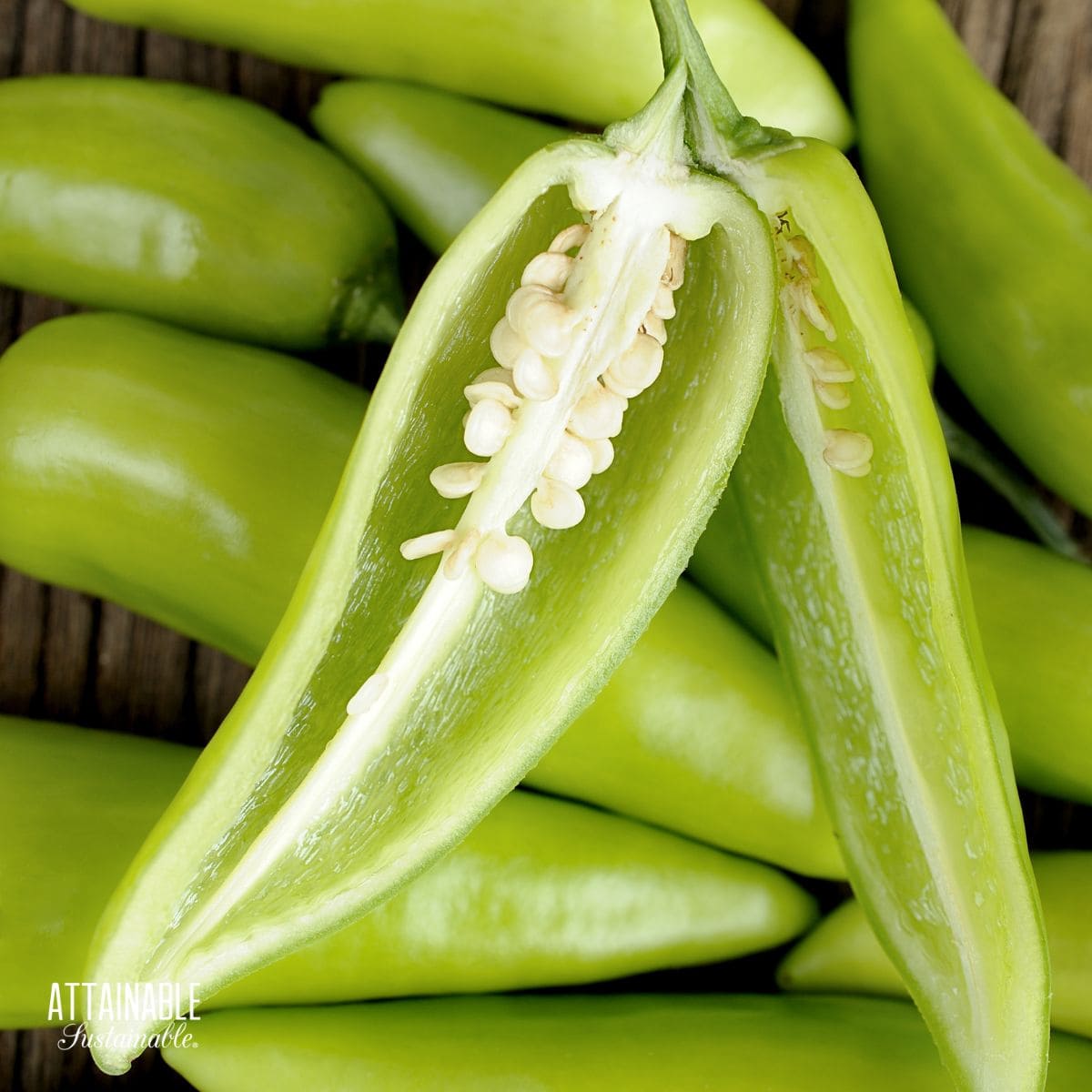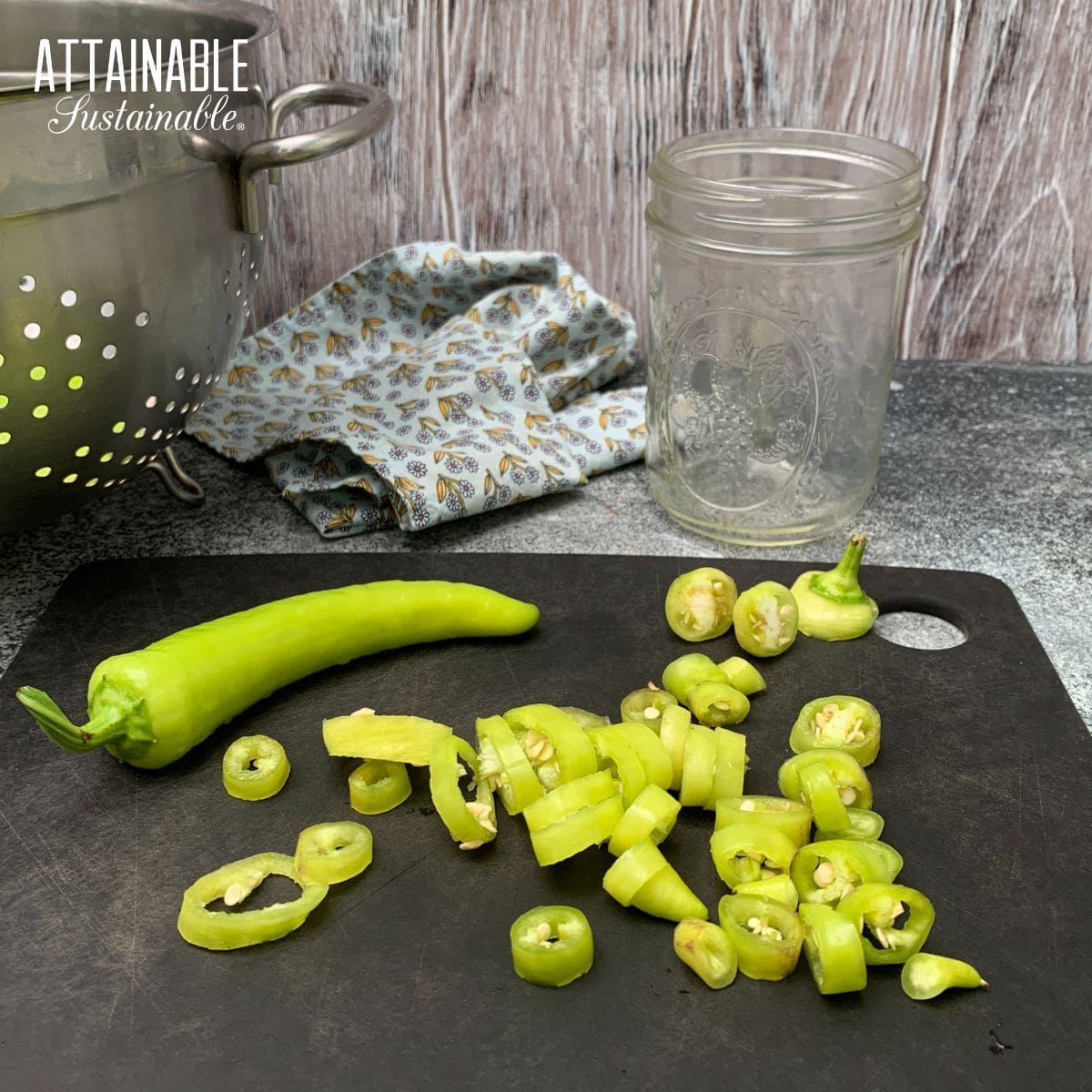If you love the flavor of hot peppers, but not the intense heat, add some banana pepper plants to your gardening plan! They’re easy to grow and will produce all summer long.
Be sure to grow some jalapeño peppers, too, so you can make these spicy and sweet candied jalapeño peppers!
Getting to Know Banana Peppers
Pepper plants — sometimes called chile peppers or (spelled differently) chili peppers — are nice enough looking that they can be added to a front yard garden with nobody the wiser!
Banana peppers are from the Capsicum family, which includes both sweet peppers and hot peppers. These light yellow, elongated peppers don’t know where to land!
There are both sweet and spicy banana pepper varieties, so be sure you know what you’re planting. Confusingly, there aren’t a lot of named varieties; these peppers are commonly just labeled as “sweet” or “hot.”
Sweet Banana Peppers
These yellow peppers have a slight kick (about 500 scoville heat units). They’re quite a bit milder than jalapeño peppers making them good for adding flavor without too much heat. I like to add them to my canned salsa recipe to give flavor without the heat.
Grow Some Greens!
Ready to grow fresh greens, no matter WHERE you live? Sign up for my
FREE quick-start guide and start growing some of your own food!
Gold Rush and Goddess are two named varieties to try.
Hot Banana Peppers
With a scoville heat unit between 5,000-10,000, these are officially hot peppers. For comparison’s sake, poblano peppers clock in between 1,000-2,000 and jalapeno peppers between 2,500-8,000. The hot variety is less commonly available than the mild.
Hot banana peppers get hotter as they mature; if you’re looking for heat, allow them to stay on the plant until they hit shades of orange or red.
Starting Seeds Indoors
Banana peppers are propagated from seed. You may find seedlings ready for the garden at nurseries, but availability can be hit or miss. Germinating your own banana pepper seeds assures that you’ll have the seedlings you want to grow in your garden.
If you’d like to try your hand at starting your own peppers from seed, start them in seed trays or pots about 8 to 10 weeks before your last frost date. Check the seed packet for specific requirements.
Pepper seeds should be surface sown or just barely covered with soil; they need a bit of light in order to germinate. Give the seeds a head start and soak them before planting.
Place seed trays or pots on a seedling heat mat to maintain the proper soil temperatures. The ideal temperature range is between 75 and 85 degrees Fahrenheit.
Once the seedlings emerge, give the pepper seedlings supplemental full spectrum lighting under a grow light. This will ensure that the plants don’t become spindly and weak while growing indoors.
When the plants have two true leaves, transplant them into individual 2″ pots. Use an enriched, organic potting mix in your seedling pot. Keep the pots watered well; if the potting soil dries out the plants will be stunted.
If the seedlings begin to outgrow the 2″ pots, you can move them up to a larger container while you wait for the temperatures to allow for outdoor, in-ground planting.
At this point, you can also plant the seedlings into a large planter, if you’re a container gardener. Keep the potted pepper inside until the weather cooperates. If you have warm days and cold nights, you can set the pots out during the day and move them back in for protection at night.
Moving Pepper Seedlings Out to the Garden
Transplant seedlings — whether homegrown or those purchased from a garden center — outdoors when all risk of frost has passed and nighttime temperatures remain above 50°F.
Banana pepper plants grow best between 65° and 85°F. If cold weather threatens after you’ve planted the seedlings outside, cover them to protect them from frost damage. You can use a plastic bottle cloche if the plants are small enough, or drape the plant with a row cover or frost cloth overnight.
If the blossoms are dropping off your plant, the daytime temperatures may be too hot for pollination. If your peppers are in containers, try moving them to a shady spot until the day time temperatures moderate. Keep the soil moist but not dripping.
Pinch the tips of the plant back to cause the plant to branch out and become more bushy. This extra leafiness protects the developing fruit from sunscald.
If you live in a warm, frost-free climate, peppers can be grown as short lived perennials once you get them started.
Requirements for Growing Peppers
Light Requirements
Peppers are a crop that needs full sun. Plan for between 6-8 hours of direct sunlight each day during the prime growing season for your region.
Soil and Fertilizer Requirements
Peppers prefer warm soil with good drainage. Add one cup of complete organic fertilizer to the planting hole. Transplant pepper seedlings, maintaining the depth of the original pot. Check with your area’s Cooperative Extension office to see about specific recommendations for your garden’s soil.
While plants are growing, you may need to fertilize periodically. Side dress with compost about a month after planting and then every few weeks.
Water Requirements
How often to water banana pepper plants depends on so many factors, primarily temperature, soil, and whether the plant is grown in-ground or in a container.
To grow strong pepper plants, water regularly to keep the soil moist, but not soggy. To check, poke your finger a couple of inches into the soil and see if you can feel any moisture. If it feels like a damp, wrung out sponge, it doesn’t need water, but should be checked the next day.
Plants grown in the ground can usually go a week between watering, unless it’s really hot. Container grown peppers will likely need to be watered every couple of days.
A layer of mulch placed around the base of the plant helps to maintain soil moisture and keep down weeds.
Common Pests
Peppers often have the same insect pest and disease problems as tomatoes and eggplant. Maintain good watering practices, because plants will stop flowering and fruiting if they experience dry conditions.
Controlling insect vectors can minimize damage when growing banana peppers, as the spores travel between plants on the feet of insects.
Cutworms are a risk to young seedlings. These caterpillars live underground an emerge at night to chew through the base of young plants. Placing a protective ring around seedlings can help, as can diatomaceous earth. If you see cutworm damage, use a chopstick to gently disturb the soil around the plant and look for the curled “C” of the cutworm to remove them manually.
Leafhoppers and tree hoppers are attracted to peppers and can cause stem damage to mature plants.
Prevent problems with soil diseases, like verticillium wilt, by rotating where you plant peppers and avoid planting where tomatoes, eggplant, and potatoes have grown in the last 2 or 3 years.
Place peppers where sunlight and wind can dry the leaves naturally and inhibit the spread of fungal spores. If you see signs of mildew on the leaves, spraying the plant with diluted, full fat yogurt, kefir, or whey can arrest the progression of mildew.
How to Grow Banana Peppers in a Pot
These peppers don’t need a lot of space to grow. Use a pot or window box that is at least 10 inches deep. If you live in a warm climate that tends to be dry in summer, a larger pot will need to be watered less frequently, saving you time and energy.
Fill your containers with a potting mix enriched with organic matter. Add ½ to 1 cup of complete organic fertilizer to each pot. Water peppers well after transplanting. Keep pepper plants evenly moist during the growing season. Peppers don’t like to dry out.
Harvesting
Banana pepper plants will continue to flower and produce fruit until the nighttime temperatures dip below 50°F. If you’re growing pepper plants in containers, you can extend the season by moving the plants to a sunny spot inside.
Harvest banana peppers when the fruit reaches its full size (four to eight inches, depending on variety) and turn from green to pale yellow, or for the hot variety, orange or red. Check your seed packet, but this is usually between 60-75 days after transplanting seedlings out into the garden.
When the peppers are ripe, use handheld pruners to clip each one from the plant.
Saving Seeds
If you’re growing banana peppers that are heirloom varieties, you can save seeds to plant again the following season.
Cut fully ripe peppers open and scrape out the seeds. Allow them to dry completely and store in a cool, dry place.
Overwintering Plants
If you bring pepper plants indoors when cold temperatures threatens, you can extend the life of the plant.
Potted plants can easily be moved inside at the end of the season and placed near a sunny windowsill. Plants grown in the ground can be dug up and potted for the winter months.
It’s unlikely that you’ll see much of a harvest from peppers during the winter months unless you provide greenhouse-like conditions, but moving plants indoors means that come springtime you’ll have fully mature plants to set out.
Using Banana Peppers in Recipes
These peppers can be preserved by fermenting, pickling, drying, and freezing, and they can be eaten fresh. You can stir fry them, stuff them, sauce them, and bake them. Check out these ways to use and preserve them:
FAQs
Why are my banana peppers turning purple?
Worry not! Dark streaks, often a purplish hue, on the fruit is an indication that the plant may have been stressed at some point. Weather extremes are a common cause.
Are banana peppers and pepperoncini the same thing?
Nope! Banana peppers have a smooth skin; pepperoncini are wrinkly. Both are commonly available as jarred condiments at the supermarket.
Can you eat banana peppers raw?
Absolutely. Slice them up and serve them with a creamy dip, add them to pizza, or chop them into a salad.
